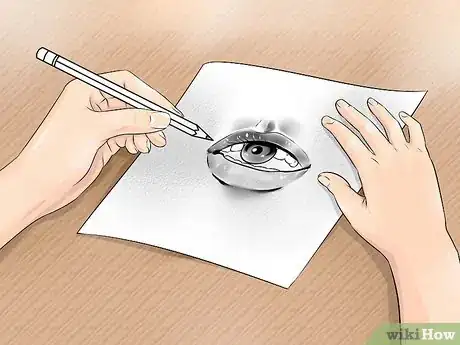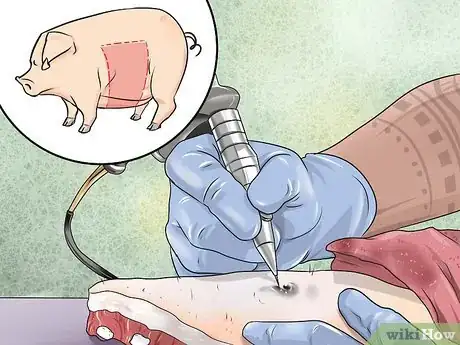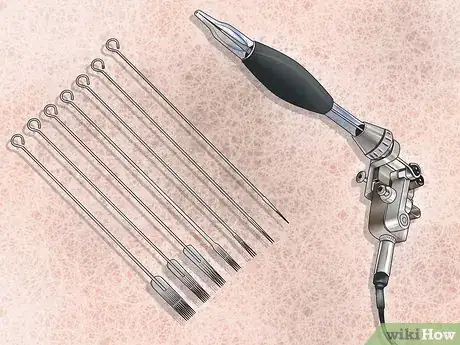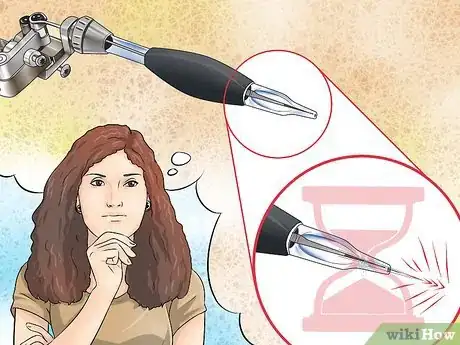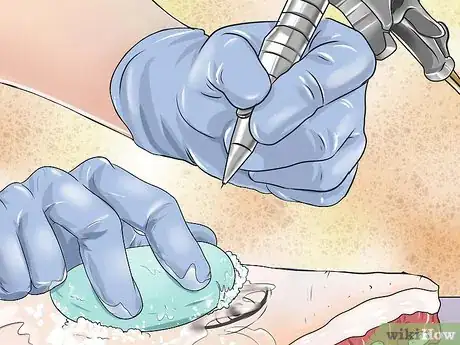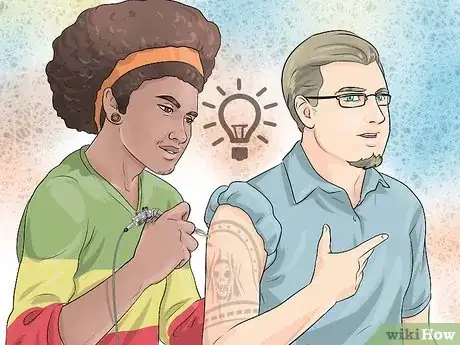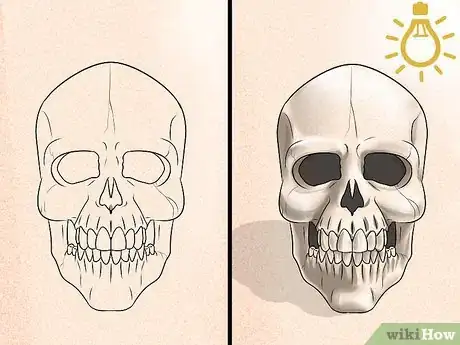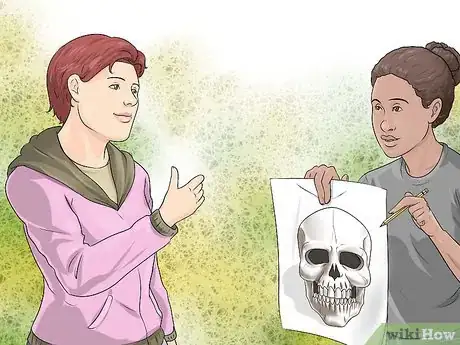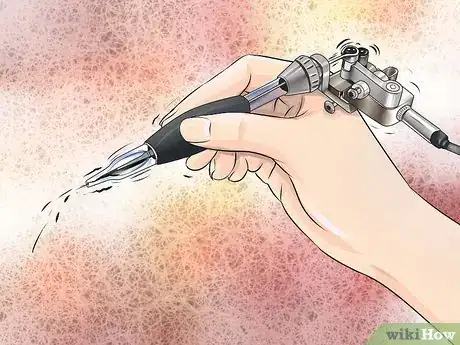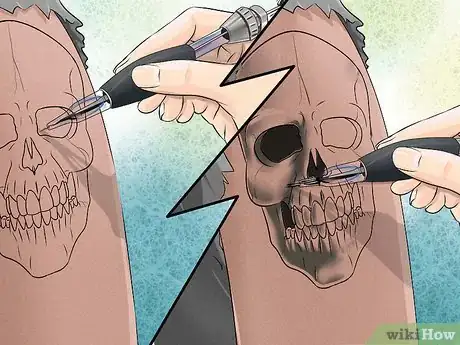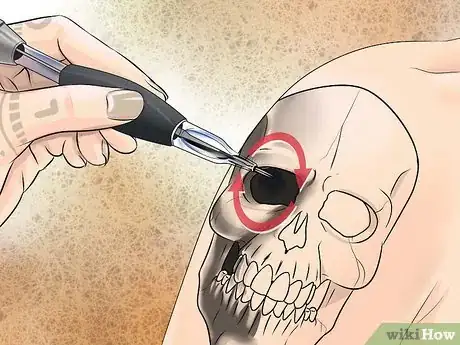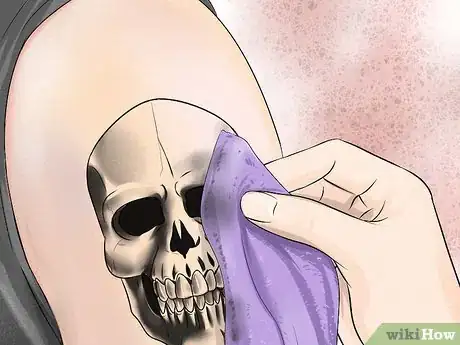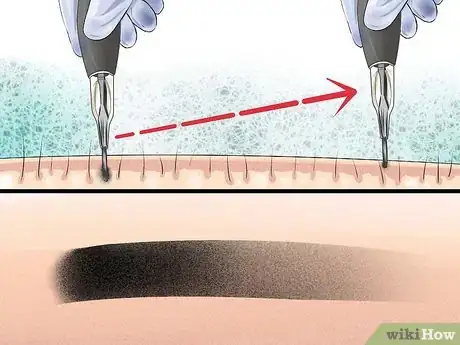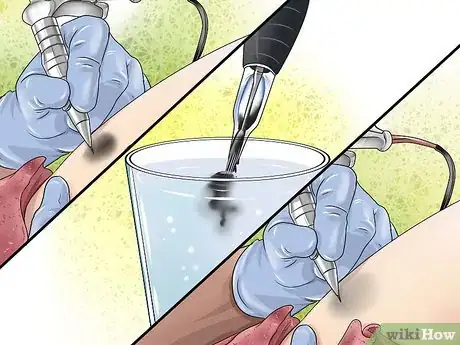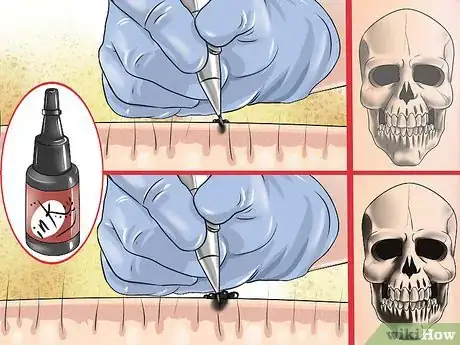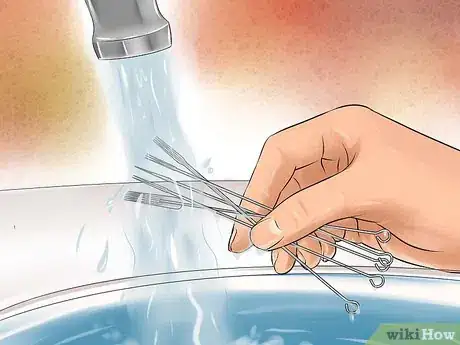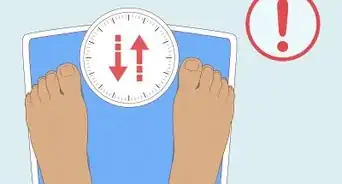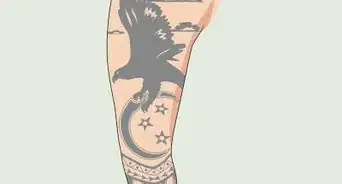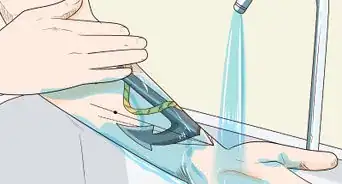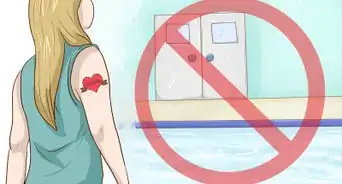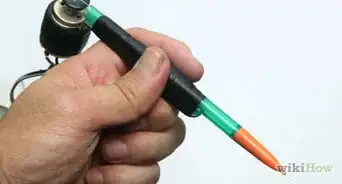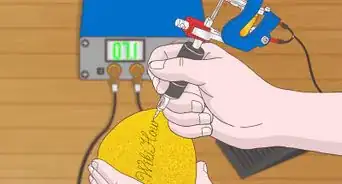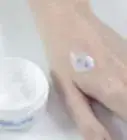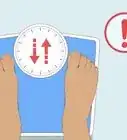This article was co-authored by Kiara Hamed. Kiara Hamed is a Tattoo Artist based in Dallas, Texas. She has over nine years of tattoo designing experience. She received her Tattoo Artist Certification in 2010 and a BS in Computer Information Systems from Clark University Atlanta in 2013.
This article has been viewed 217,201 times.
Good shading can make a huge difference in the quality of the tattoo. It can help cover up mistakes or add a fresh three-dimensional look. Many people take years to perfect their shading ability, so even if you already know how to tattoo, don’t expect to learn master-level shading in a few days. However, if you are interested in an overview of how shading is done and the techniques used to accomplish the task…you’ve come to the right place!
Steps
Preparing to Shade a Tattoo
-
1Practice with paint or a pencil. Shading is an artistic endeavor - no instructions will be able to duplicate the confidence you'll gain by trying to shade yourself. Shading a tattoo is not so much different from shading a still life. Try to become comfortable shading off body, even if you are already an accomplished artist.
- Practice with pressure. Pressing hard versus pressing lightly can have dramatically different effects, so you should get a feel for this ahead of time.
- Also, practice using different strokes to prepare yourself for tattooing different kinds of artwork.
-
2Tattoo a pork belly for a more realistic feel. Pigs make good human analogues and you can buy a pork belly at a local grocery store or even online. This way you can get a feel for how much pressure to use and what type of strokes to use without worrying about permanently marking a human's skin just yet.Advertisement
-
3Choose an appropriate tattoo machine and needle size. Different shader needles result in different effects. For instance, bigger shader needles create a softer shade than smaller needles, which concentrate the color more. Ensure that the needle is protruding no more than 1 mm (0.039 in) for the purposes of shading.[1]
-
4Select the right speed on your tattoo machine to create the effect you're going for. A slower speed helps create a softer shade that you can build upon. Using a faster speed creates darker shading. Adjust the speed as needed depending on what type of look and depth the customer wants.
-
5Prepare the area. Clean the entire area with soap and water, especially if you have already done the lining. Make sure that you have gotten rid of any stencil marks, sticky residue, or grease that will get in the way of your shading process.
Planning the Tattoo
-
1Design the tattoo according to the customer's wishes. Always discuss with your customer how they want their tattoo to appear. Even if they say they trust you, it’s always good business to keep them in the loop on the decision-making process.
-
2Factor in light and shadow. You need to consider that light and shadow will play into each individual tattoo if you want to successfully shade. Shading a tattoo is as much about art as it is about technique. Ask your customer to describe the hypothetical lighting of the tattoo.
- Your hypothetical light source should always be the same throughout the course of your shading. You don’t want the shadow to be incongruous. If the top part of an arm is lit up, then the bottom part should be darker.
- If you're using colors, try to shade with complementary colors. Grab a color wheel and find a complementary color to the one you used for lining. This will make the tattoo really pop.
-
3Draw a sketch for the customer. The customer will want to have an idea of what the tattoo is going to look like and it will also help you figure out exactly how to draw it. Try a few practice sketches to get it right.
Shading a Tattoo
-
1Fire up your tattoo machine. Ensure that you are using a machine that is appropriate to the tattoo and made for shading. Use a needle type and size that will fit the work that you are doing. Adjust the speed on the power supply as well. Many tattoo artists recommend a lower speed for shading than normal lining.
-
2Leave time between lining and shading. You don’t want to go straight from your line work to shading. Although it is possible to wait 15 minutes or so for the tattoo to dry, most artists prefer to do the shading in a separate session than the lining. Not only will this make your job as the tattoo artist easier, but it will also give the customer a chance to think over how they want their shading done.[2]
-
3Use Vaseline throughout the process. Vaseline helps protect and lubricate the skin, so apply it to the customer's skim throughout the tattoo session as many times as you need to.
-
4Work in a circular motion. Start in the center of the area you plan to shade then move outward in a circular motion. Remember that the darker areas are going to require more pressure than the lighter areas. This takes a lot of feel, so you’ll have to practice.
- Using a circular motion is gentler on the skin than going back and forth.
-
5Wipe off excess ink as you go. If there is any unnecessary ink on the surface of the skin as you are tattooing, take it off. You need to be able to examine your work. You may notice some inconsistencies in your work, in which case you need to go back in and fix it up. Alter the shading to address any inconsistencies in that specific tattoo.
- Remove any remaining ink when you're finished with the tattoo as well.
-
6Change the depth of the shade by adjusting the weight of your technique. Essentially, your brushwork should be heavy to light. You want to add more pressure to produce the darker areas and reduce pressure as you move to a lighter area. You don’t want the gradients to look obvious, so try to make this transition very smooth. [3]
-
7Dilute the ink as needed. This helps to create natural-looking gradients. Dip your needle in distilled water to dilute the black pigment into a gray pigment. This is helpful because you don’t have to change needles as you move through the tattoo.[4]
- As you apply the ink, tilt the needle in a circular manner to blend the tones of the tattoo effectively. This will apply a different amount of ink and contribute to the shading.
-
8Change the ink capacity in the needle mouth when necessary. This is a slightly more time-consuming method. However, it helps if you aren’t comfortable with your ability to produce a gradient simply by managing the pressure you apply with the needle. If that is the case then changing the ink capacity is another option.
-
9Clean the needles as you go. You want to make sure that the darker ink is completely gone from the needle before you move onto shading lighter areas. Neglecting to clean your needles could seriously mess up your shading.
References
About This Article
To shade a tattoo, start by applying a thin layer of Vaseline to the area you want to shade in order to lubricate and protect the skin. Next, turn on the tattoo machine and set it to a low speed for better control. Then, start with the needle in the center of the area you want to shade and work your way outward to the edges in a circular motion. As you work, apply more pressure to darker areas and less pressure to areas that should be lighter. Additionally, wipe off any excess ink as you go so that you can see what you’re doing. For tips on how to dilute the ink to make your shading look more natural, read on!
